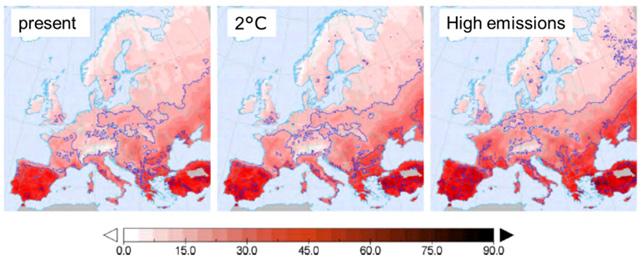
Drought and forest fires beware: Diversity is key
Due to their high degree of diversity of species, only 0,1 % of forests in the Baltic States are damaged by drought and fire. This makes forests in this region some of the most resilient in Europe.
During 2018, we have seen some huge and devastating wildfires around the globe. First, Sweden experienced an unusually long heatwave during May-July 2018, which resulted in a number of forest fires throughout much of Sweden (25,000 hectares). In November 2018, US experienced some high damaging wildfires along the Californian west coast.
Forest fires are complex phenomena caused by a combination of land management, human activities and climate and weather conditions. There is no doubt that climate changes are making conditions more favourable for forest fires. Of the 20 largest wildfires in California’s recorded history, 15 have occurred since 2000. However, temperatures in California have increased by about double the global average, leaving the forest more fire prone.
A research by the European Commission shows that increasing temperature in different scenario will affect the risk of forest fires in all part of Europe. However, the effects are more significant in southern Europe as illustrated in figure 1. While countries in southern Europe concentrate most on the annual burned area, northern areas such as Scandinavia have recently suffered from unprecedented forest fires, which are not common in this area.
Only about 0.1% of all forest stands in the Baltic States are damaged by fire, wind, water, disease, pests, etc., which leaves the Baltic area with a relatively low risk regarding damage. A recent study published in Nature, shows that a natural forest with a high degree of diversity of species has a higher resilience to drought and fire. The author behind the study, William Anderegg, explains: “So, what does a forest with hydraulic diverter look like? First, consider the opposite – an ecosystem with only one kind of tree. Picture, for example, a Christmas tree farm. Each tree is exact same species. Diversity doesn’t get any lower than that.”
Thus, a key to reduce the fire risk is adapting forest management practices to climate changes. At HD Forest, we always try to be in front of this development in order to better balance fire suppression with prevention and to integrate long-term preventative measures (e.g. forest thinning, grazing, climate resilient species, natural and diversified forests).
 Figure 1: Overall weather-driven forest fire danger (score from 0 to 90) in present, 2°C and high emissions scenario.
Figure 1: Overall weather-driven forest fire danger (score from 0 to 90) in present, 2°C and high emissions scenario.
However, the climate changes are not only a bad thing for Baltic forest owners. As published in a previous newsletter (Mai 2017), the 2°C increasing temperature can affect the forest growth increment by 20-30% due to the fact that the growing season is extended by 1-2 months - read article from May 2017.
Sources: ScienceDaily
